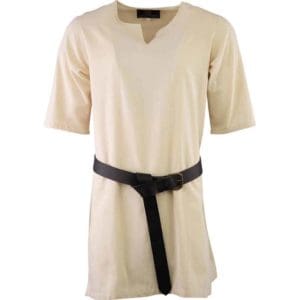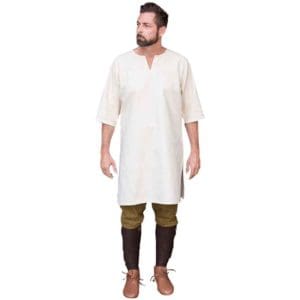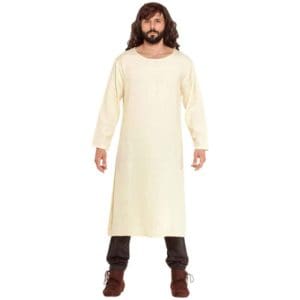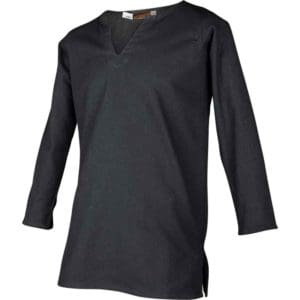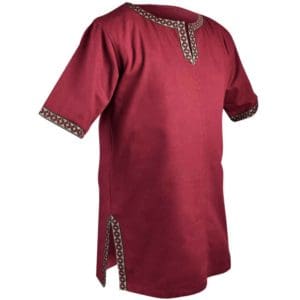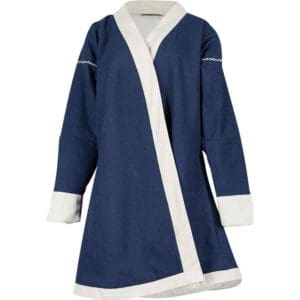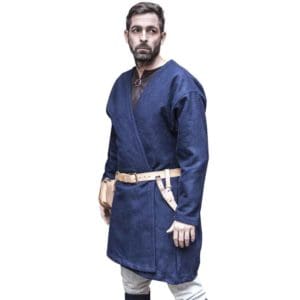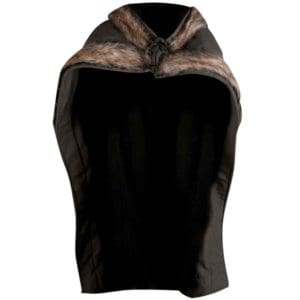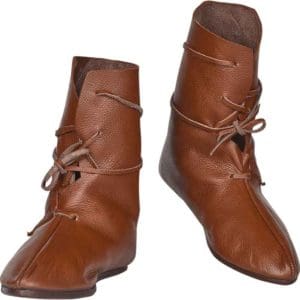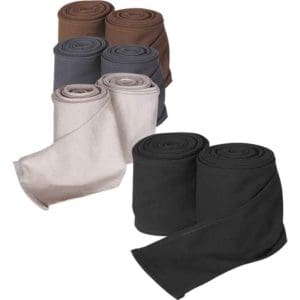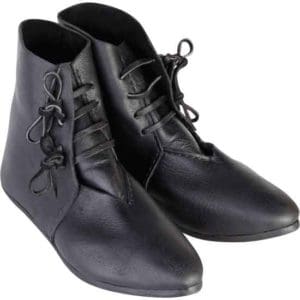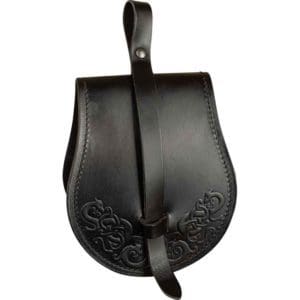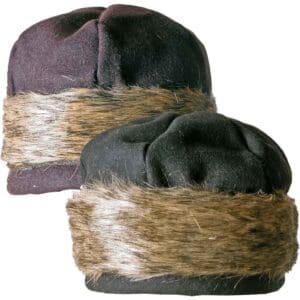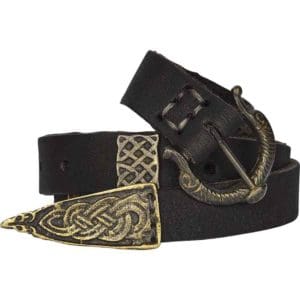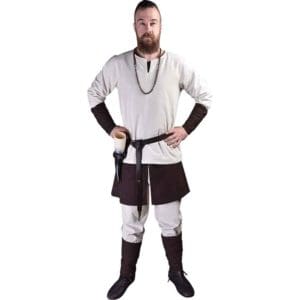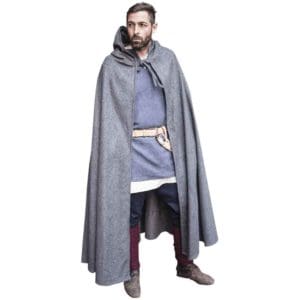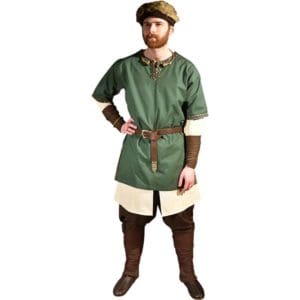Men’s Viking Clothing
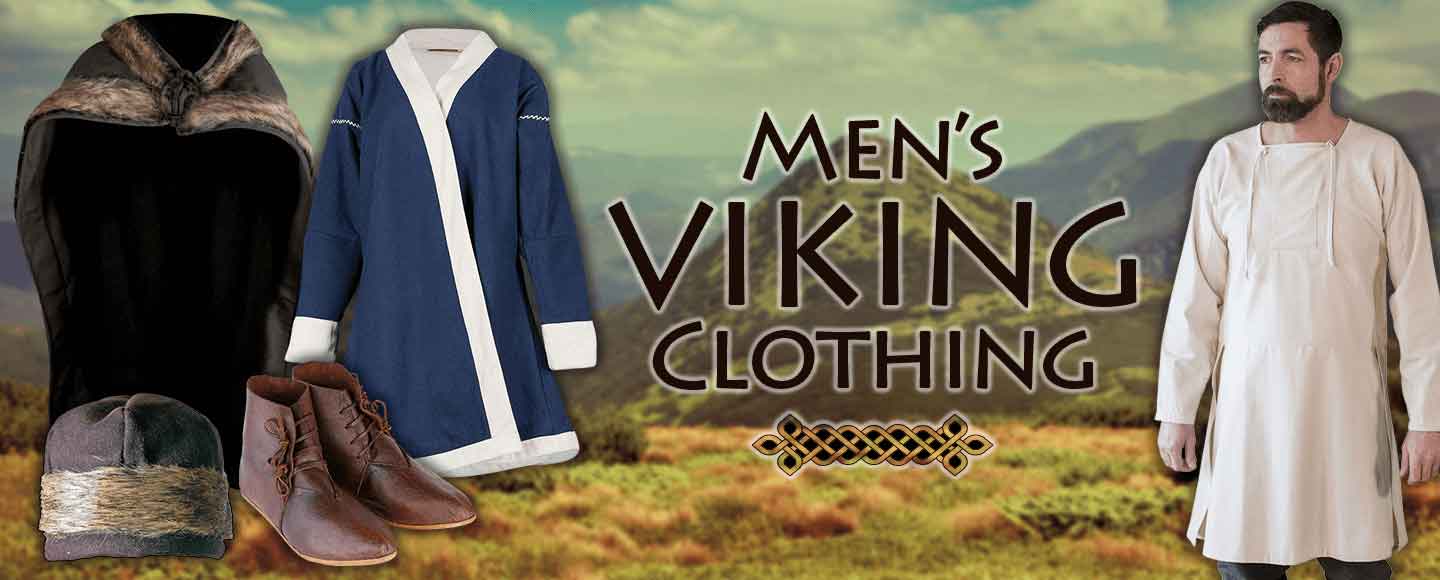
In the past, we have given a general overview of Viking age clothing, such as the materials and processes used. In this post, we are going to dive into the styles and garments of men’s Viking clothing. This article is going to focus on the various garments, starting from the inside out.
Undergarments
Let’s start with the basic undergarments. Unfortunately, little is known about any underpants that may or may not have been worn. However, much more is known about undertunics. This would be an undershirt in a more modern context. A Viking undertunic was usually linen. This would make it more comfortable and help with wicking away sweat.
These undertunics could be longer than the tunic that would cover them. Some people have suggested that wearing a long undertunic meant that the wearer was showing off their wealth. This reasoning stems from the fact that linen could be expensive and the longer the undertunic, then the more material required and therefore a higher cost involved. In addition, some of the undertunics could have had a square neckline with overlapping flaps that tie in place. An archeological find at Viborg is the source for the knowledge of this design.
-
Mens Short Sleeve Viking Undertunic – Natural
SKU: HW-701398NRated 4.75 out of 5$34.00$27.20 Add to Cart
Tunics and Pants
The next layer of clothing that a Viking man would wear featured a long tunic over a pair of pants.Starting with the tunic, this common garment was made from patterns that ensured that the tunic would be tight fitting but wouldn’t restrict movement. Tunics would have simple braided trim. This trim was usually woven from brightly colored yarns. However, they could be made from silk. Only the wealthy could afford this type of trim. The tunics often had keyhole necklines, which were circles with a slit down the front. This allowed the shirt to slip on more easily.
When it comes to pants, there were a wide range of designs. They could be baggy, tight, simple, or elaborate. Some of the pants had straps underneath the heels. However, practically all pants lacked pockets and flies. In addition, many surviving examples of Viking pants feature belt loops. Viking pants were wide at the top and had to be secured. The fact that many Viking pants basically required a belt, or some way of securing them, was mentioned in sagas. In the Baroar saga Snaefellsass, Einarr killed the character Lon-Einar when Lon-Einar’s belt snapped during battle, and he had to grab his pants. This narrative suggests that some degree of looseness was expected with pants. However, as mentioned earlier, pants could be tight-fitting as well. A passage in the Eyrbyggja saga suggests that tight-fitting pants were a sign of a stylish dresser.
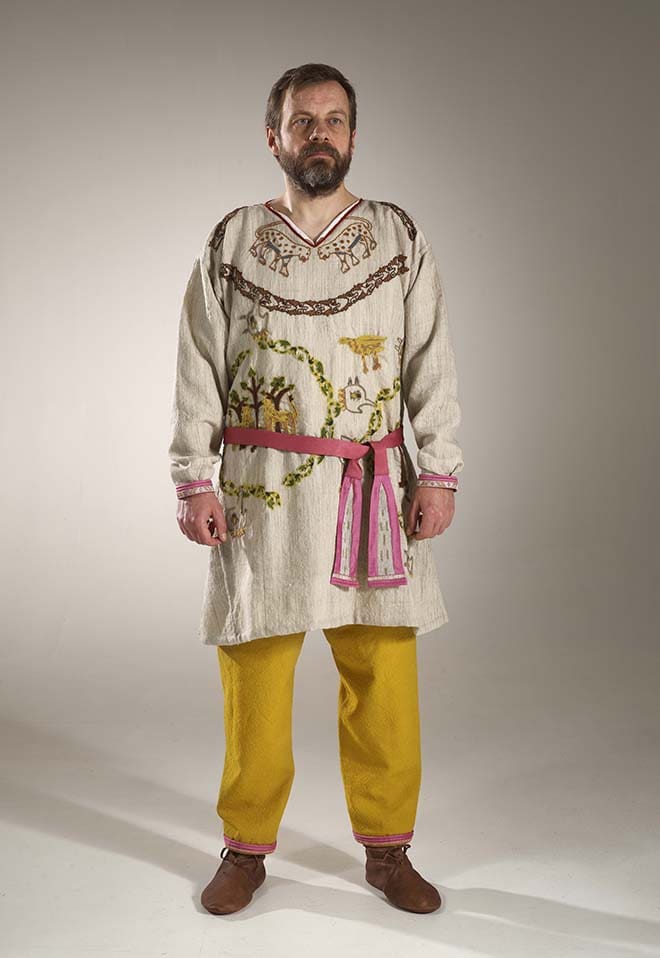
Outer Garments
On top of tunics, pants, and undergarments, Viking men wore additional layers of clothing. They would wear an overtunic called a krytill. These overtunics were often made from wool using complicated patterns. These patterns, while complicated, would use very little fabric wastage. This is likely due to the cost and labor involved with making the fabric in the first place. Kyrtills could have varying hem lengths. As with the undertunic, the longer the overtunic then the wealthier the wearer was likely to be. Overtunics would often have high necklines as well.
Over the top of the tunics, a Viking man could wear a cloak. These cloaks were large rectangles of wool. Their hems would end between the knee and ankle. Cloaks longer than this were called slaedur. These were considered fancy pieces as they were so long that they would trail across the ground. One slaedur features in the Brennu-Njals saga. Regardless, in general, cloaks could be embroidered or feature trim. It was common for Vikings to wear cloaks with the overlap or opening of the cloak to rest on their right side. This meant that they could use their dominant hand if needed without the cloak getting in the way. Besides cloaks, woolen jackets were also sometimes worn.

Clothing Accessories and Additional Items
Besides the basic clothing pieces, there were multiple other clothing items that Viking men wore. Leg wraps were a commonly worn accessory. They were long rectangular pieces of fabric woven to size. These pieces would wrap around loosely cut pant legs. Starting at the top, they would be wrapped downwards, which would help secure them in place even without any sort of fastener. Leg wraps were more popular in eastern Norse areas.
Of course, the Vikings needed footwear. For Viking men, the most common footwear was a leather shoe. Viking shoes in general didn’t last long. Shoes were turned-style, meaning that the shoes were sewn inside-out and then turned right side out. There were a variety of shoe styles. Some used toggles, while others tied with laces. Most shoes were ankle height. Leather shoes made wearing wool socks in winter more likely as the leather was not great protection against cold, wet weather. Water had a tendency of soaking through the shoes. Wool would help to prevent the wearers feet from freezing.

Hats and Hoods
In addition to footwear and leg wraps, Viking men would also wear woolen hats. The hats were often triangles of wool or other materials sewn together. Some hats had chin straps, while others didn’t. In the Icelandic lawbook Gragas, there were laws against pulling a hat off of someones head. The penalty depended on whether the hat had a chinstrap and which way it was pulled. For example, if a person was wearing a hat with a chinstrap and the hat was pulled backwards, the chinstrap would pull against the wearers neck. This action had the severest punishment. Besides hats, Vikings could also wear hoods called hottr. The fit and level of decoration for the hoods varied.
If a Viking man wanted to carry some gear, they would have worn a belt with pouches. Since Vikings didn’t have pockets, bags were the most convenient way to carry tools and other gear.
In this article, we dived into men’s Viking clothing. There were multiple layers that they would wear. While the general items didn’t vary from person to person, their material, level of decoration, and cut would change depending on the wealth of the person wearing the clothes. This isn’t that much different than today. Most modern men today wear shirts and suits, it’s just the cost that varies to show off various factors of life. Just like modern men, Viking men’s clothing would change with occasion, status, and wealth.

